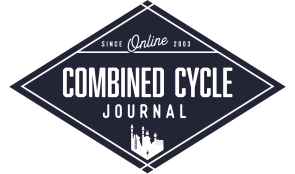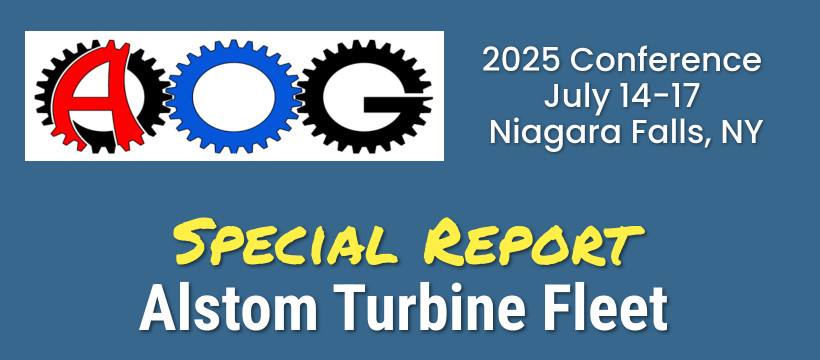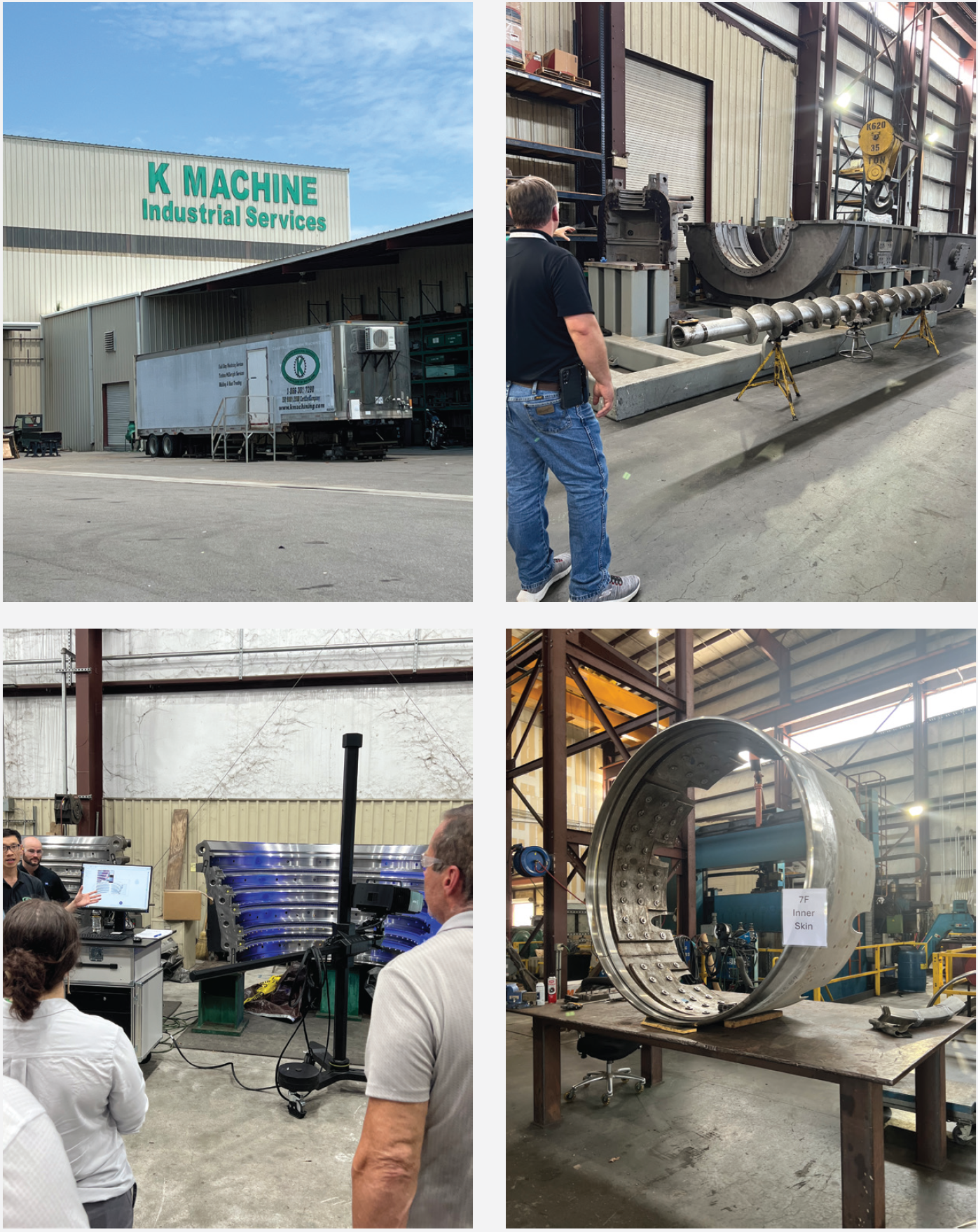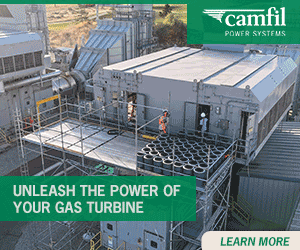Powering forward: AOG 2024 showcases non-OEM technical solutions and global collaboration
The Alstom Owners Group (AOG) serves the global community of Alstom gas and steam turbine power generation equipment owners and operators. This group began in 2018 as a private user organization and has gained widespread support from third-party service providers. Reported below is the 7th annual meeting, held July 29-31, 2024, in Savannah, GA. If you are an owner/operator or solutions provider for the Alstom fleet, consider it required to attend the AOG 2025 conference and exhibition July 14-17 in Niagara Falls, NY, with a special shop tour across the border at Liburdi Turbine Services.
Presentations from this and previous AOG conferences are available to end users by registering for the discussion forum at www.aogusers.com, which is a great way to get up-to-speed on the rapid advancements being made by third-party solutions providers in the Alstom GT and ST markets.
The basic 2024 agenda:
- Monday – Presentations by owners/operators and by FM.
- Tuesday – Presentations by service providers.
- Wednesday – Technical training options.
- Thursday – Tour of K-Machine Industrial Services, Savannah.
Rocksavage, UK
In a follow-up to AOG 2023, Chris Bailey, InterGen UK’s plant manager, offered GT B EV combustor performance update 2024. This overall project was introduced last year as a “rebuild success” with a “truly pragmatic solution.”
The Rocksavage Power Plant is a fully merchant 2 x 1 800 MW CCGT in the northwest of England, operational since 1998, featuring two GT26 A/B version machines. There is no service agreement with the OEM.
Gas turbine B’s failure, calling for a complete EV combustor rebuild, occurred on May 21, 2022. To replace the EV combustor structural components with new from the OEM (Alstom/GE) would be a 46-week lead time. Estimated return to service would be June 2023. That was not acceptable. The plant’s pragmatic approach, including a global search, was launched (Fig 1).
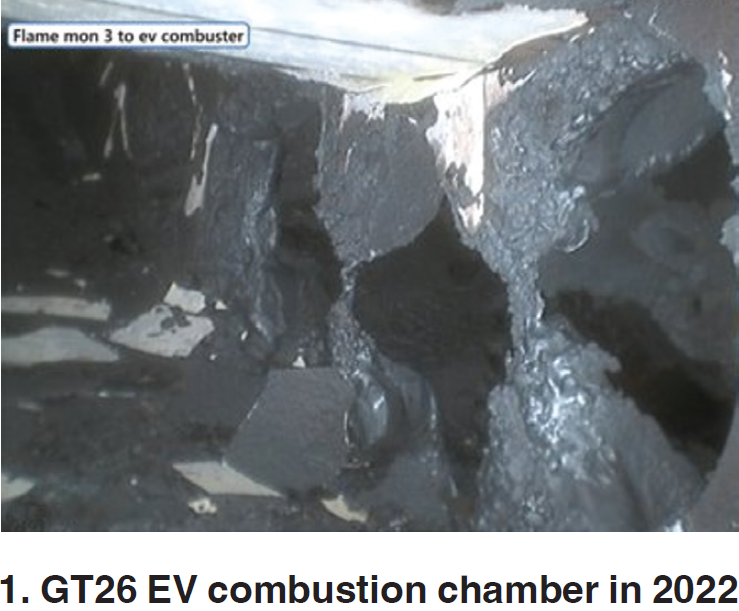
One fundamental issue: there are very few GT26 A/B units operating worldwide, and InterGen owns the majority (four).
Bailey outlined the four-pronged project approach:
- Engage globally with independent power generation owners, GT consultants and service companies.
- Contact the engineering teams of the other GT26 A/B owners and operators, including Dock Sud in Argentina (Fig 2).
- Work with the OEM to explore resource options beyond the European teams (e.g. US GT24 team).
- Use contacts within the OEM team to secure, assess and purchase selected used parts.
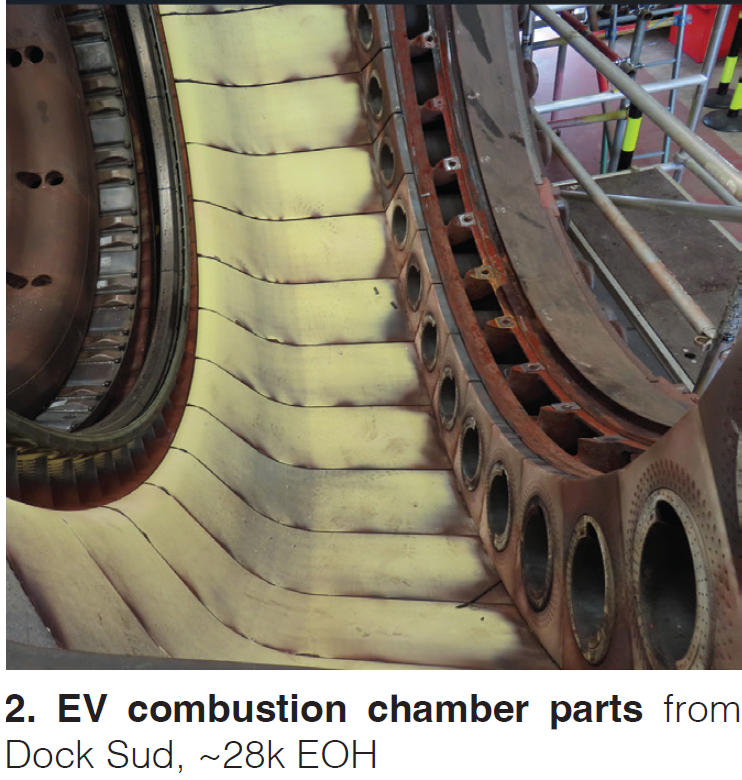
The EV combustor rebuild began October 6. The gas turbine rebuild was completed in November, units were synchronized, and the plant returned to commercial service on December 6, beating the OEM-assumed schedule by six months.
Bailey then gave us plant performance data up to April 2024, challenging an OEM constraint of 100 starts in that time period. Gas Turbine B has undergone 149 starts, and the overall plant total for two GTs and one ST is 500 starts. “Starting reliability is above 96 percent, and none of the failed starts has been attributed to GT B,” Bailey said.
First in and last standing. Beginning with third quarter 2025, it is expected that only Rocksavage will operate GT26 A/B machines. The two at Doc Sud (Argentina) have changed to HE (high-efficiency conversion), as will the Rocksavage sister plant (Croyton) in 2025.
Bailey’s key message takeaways:
- Challenge yourself.
- Know that the OEM is not the only service provider.
- Trust in-house experience and third-party experts.
- Gain support from your shareholders and your insurance provider.
- Ask the right questions, and don’t take no for an answer.
- Innovate, collaborate, and be pragmatic.
One underlying message is strong support for the AOG Owners Forum, available via www.aogusers.com.
Bailey’s final statement: “We can help each other out, especially for parts. This avoids us all having to call around.”
Sand Lake, Orlando experience
What existed as Orlando Cogeneration is now Sand Lake Energy Center, a 120 MW facility now owned by Florida Municipal Power Agency. The facility began operations in 1993 with one Alstom GT11 NMC combustion turbine and one Siemens steam turbine, supplying power to Duke Energy Florida.
The facility was acquired by Florida Municipal Power in 2024.
Danny Slade, maintenance manager, was on hand to explain 30 years of operation at Sand Lake. He called it a “small cogen site that is now running more hours than expected, and is in base-load operation.” It runs on a small footprint “with a small staff in a city (Orlando) with limited heavy manufacturing,” he explained. Site area is 4 acres including laydown area for parts and parking for craft (Fig 3).
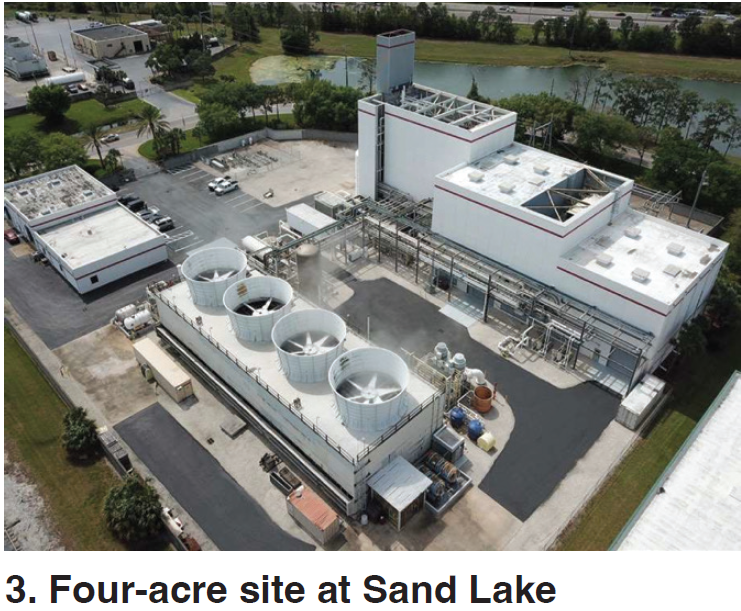
During the pre-sale outage, the GT11 underwent a major C inspection, repair on 36 burners, combustor parts and inner liner, turbine rows 1 through 4, and heat shields (Fig 4). The geared, axial flow (VAX) steam turbine also underwent a major inspection.
A significant discovery was row 16 compressor blade damage, with replacement parts to be supplied by GE (Baden). Other damage was repaired on site. Ignitors also suffered internal failure and were repaired. Major non-OEM suppliers included Hughes Technical Services and K-Machine.
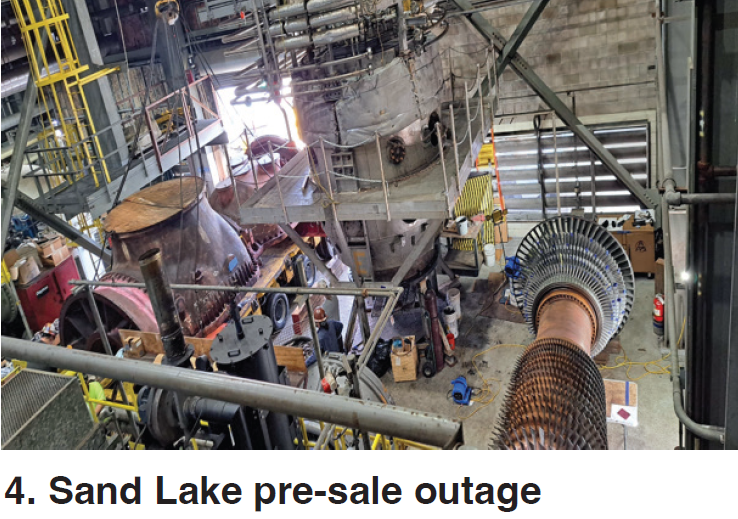
The outage was completed February 2, 2024.
Operation data for the plant as of June 2024 includes 558 starts and 251,522 operating hours.
Slade stressed both the outage and long-term operation as a “good example of local experience and solutions.”
Insurance perspective
Involving a plant’s insurance provider early in project planning was a recurring topic during discussions at AOG 2023, and a key provider was on hand for 2024.
Tom Hadfield is an engineering specialist at FM, a policy-holder-owned commercial property insurance provider. He came to Savannah to offer FM – 10-year loss study focusing on Alstom machines.
In total, FM holds insurance on 4000 steam turbines and 3500 gas turbines in various uses and industries worldwide.
Looking at Alstom machines in the US and UK, Hadfield offered a review of failure events based on parts of the machines. FM’s goal is to “review each event and pinpoint the cause to help provide loss prevention improvement recommendations.” He added, “Our goal is to improve availability, reliability and reduce downtime.”
Hadfield offered loss scenarios on GT 24/26 and GT 11/13 machines for more than 100 insured Alstom units, covering 12 losses from 2014-2024, and comparing frequency with severity (Fig 5). For this chart, the loss scenario costs represent the initiating event plus consequential damages.
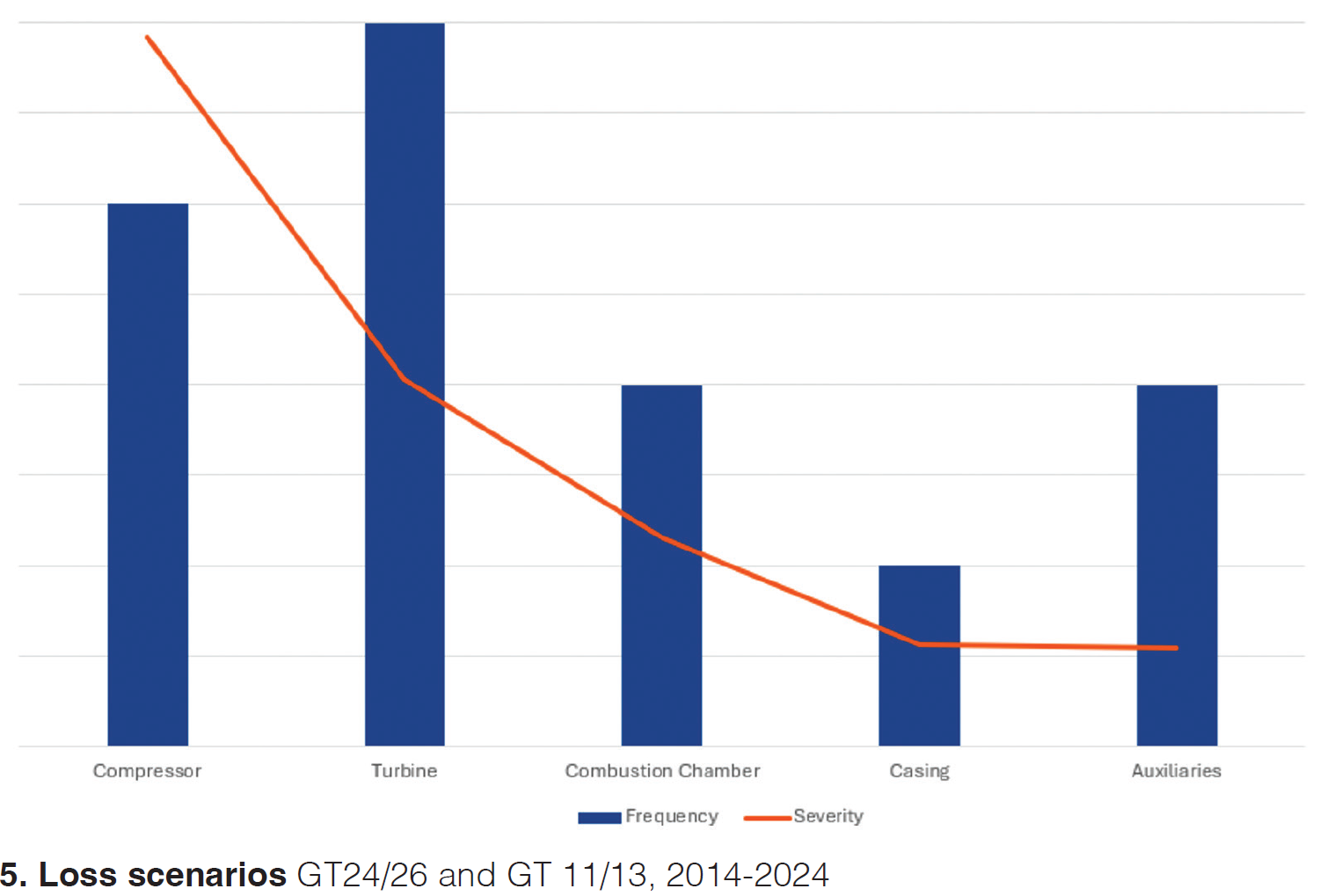
“Compressor issues,” he explained, “lead to the highest costs.”
He then shared data on gas turbine operating modes based on demand in both the US and UK, highlighting increases in component stresses as well as heat transients, thermal fatigue and fretting. He added that “two-shifting is done to make more money, but leads to more forced outages.”
He then offered selected examples:
- Compressor loss caused by a liberated Row 16 locking piece, causing damage to Rows 17-22. The unit had tripped due to high EV combustion chamber pressure.
- Turbine trip due to high vibration. The cause was partial liberation of an LPT4 blade causing damage to multiple LPT4 blades and the EGH (Fig 6).
- Foreign object damage. A GT11 suffered increased vibration, then tripped due to turbine inlet temperature. Inspection revealed a liberated M16 cap bolt along with vane/blade damage and other liberations.
- Again for a GT11, an OTCC pipe failure and large release of stored energy led to a plant trip and caused considerable damage to the surrounding area. Some parts were found 30 meters away. Incorrect welding consumables had been used during construction.
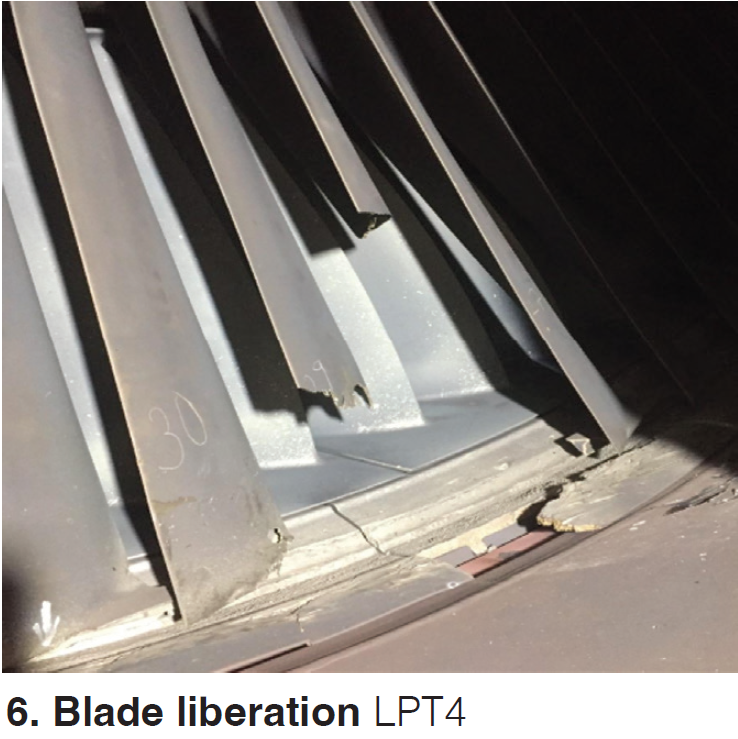
Other examples were discussed.
His conclusions included QA/QC and FME program thoroughness, emergency training, prompt service bulletin compliance, and continually updating inspection criteria based on findings.
His final statement: “Shared knowledge is critical for an available, reliable and efficient fleet of Alstom gas turbines.”
No AOG complete without shop tour
On the final day of the AOG 2024 conference, attendees were given an exclusive tour of K-Machine Industrial Services’ expansive Savannah facility. Guided by president Andy Dyer, engineering manager David Yager, and gas turbine CSM Chris Hutson, participants explored the 85,000-square-foot repair and manufacturing center.
The facility boasts large CNC and manual machine tools, including vertical lathes with up to 17-foot turning capacity and mills with up to 14-foot x 31-foot travel, as well as an overhead crane capacity of 70 tons. These capabilities enable the growing outfit to handle heavy rotating equipment component manufacturing and repair, along with comprehensive equipment rebuild services.
The tour highlighted K-Machine’s specialized services in power generation, particularly their expertise in Alstom gas and steam turbines. Attendees observed the facility’s advanced machining capabilities, including reverse engineering with Faro Arm technology and a full-time quality assurance department operating under an ISO 9001:2015 certified program.
The company’s welding services, featuring ASME code welding programs and experience with specialty alloys, were also showcased, emphasizing their ability to perform complex repairs and fabrications.
Throughout the visit, the K-Machine team emphasized their commitment to rapid response and customer-focused solutions, buoyed by talk during the earlier user discussion session of many successful projects.
Commissioning
Hughes Technical Services (HTS) is a division of AP4 Group and provides field engineering support in all turbine control and excitation systems plus comprehensive field mechanical services on GE/Alstom heavy-duty gas turbines. HTS was formed in 2014 by former ABB/Alstom engineers. Gary Hughes presented Commissioning and mechanical solutions to optimize reliability and performance.
He began with commissioning, featuring full gas and steam turbine HTS crews including all tooling, held in-house. Commissioning includes instrumentation and controls, and HTS is an authorized ABB distributor.
He next covered consulting and engineering, including training in operations and controls.
Hughes offered an update on activities since the last AOG meeting, including turnkey projects completed on or ahead of schedule. Examples:
- 8 C inspections: 5 turnkey, 5 countries.
- Multiple A/B inspections.
- 3 steam turbine overhauls.
- 650 individual customer support transactions.
- Zero lost-time accidents.
- 30-day schedule, rotor bearing to mechanical complete.
He offered a full list of C inspection parts, both new and refurbished (working with TRS Houston in an exclusive agreement for Alstom parts).
Parts refurbishment examples (with TRS) included hot gas casings, vanes, blades, heat shields and others.
One helpful note was a list of “What we are seeing.”
- Blade tip wear.
- Honeycomb seal wear on vanes.
- Heavy wear in HGC inlet and exit rings, and distortion throughout the HGC.
- Major distortion and out-of-roundness on LCCI and TVC.
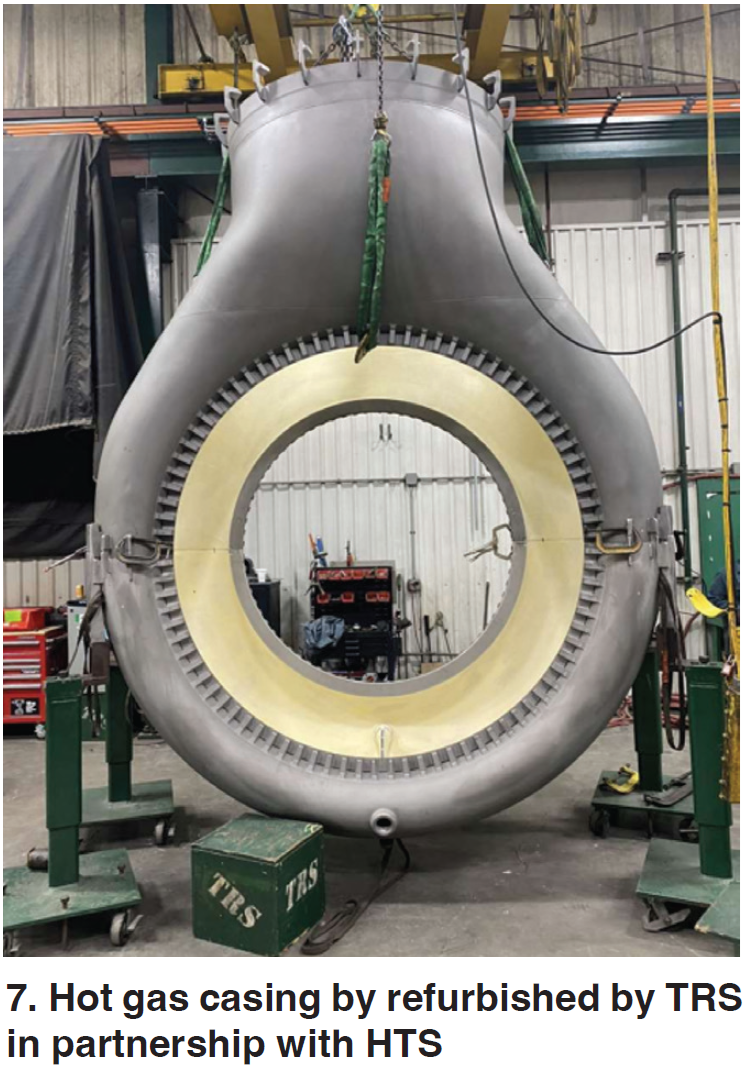
He then showed a finished product (Fig 7). He followed with Voith overhaul (authorized distributor), valve servo upgrades, and AVR and SFC control upgrades.
HTS would be part of the Wednesday Training Day for a much deeper dive.
Catalysts
Groome Industrial specializes in HRSG tube cleaning, SCR catalyst cleaning, CO catalyst washing, AIG tuning and testing, and acquired the ExPro companies (explosive industrial cleaning) in 2021.
Matt Cohen discussed Servicing and maintaining GT emissions systems and HRSGs focusing first on common factors that lead to non-ideal performance:
- Non-uniform gas flow.
- Non-uniform NH3/NOx.
- Non-uniform temperature.
- Catalyst deterioration (poisoning, fouling, thermal phase change).
- Operations (insulation blockage, moisture, damaged seals, poor ammonia control, bypass, load changes).
He then turned to catalyst cleaning for CO (Fig 8) and SCR as well as AIG tuning.
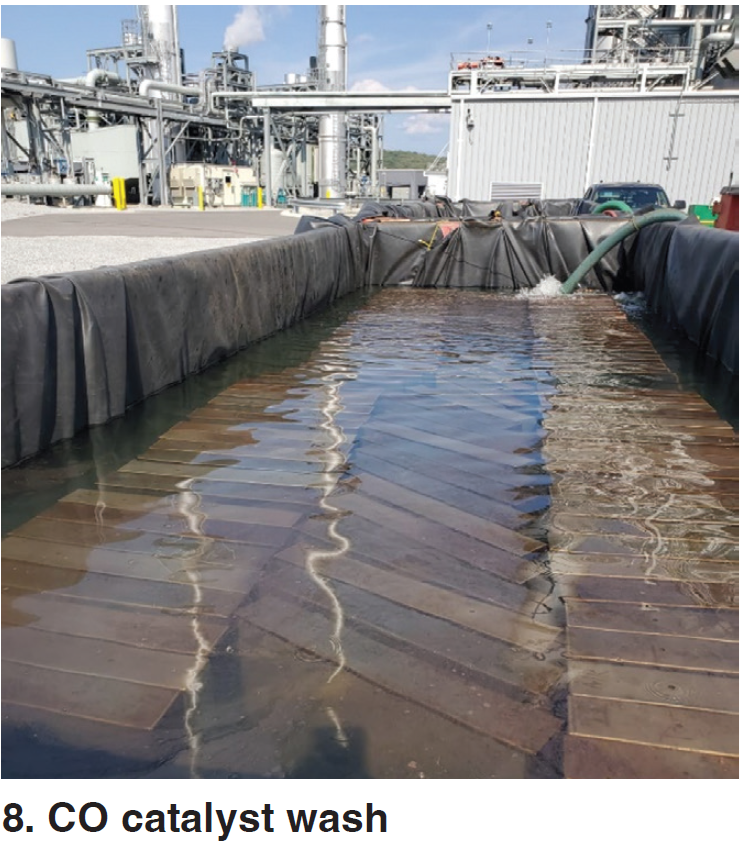
He offered an interesting summary for catalyst testing scheduling (Fig 9).
Regarding catalyst testing specifics, he suggested multiple samples: “Don’t base decisions on what might be one bad sample.”
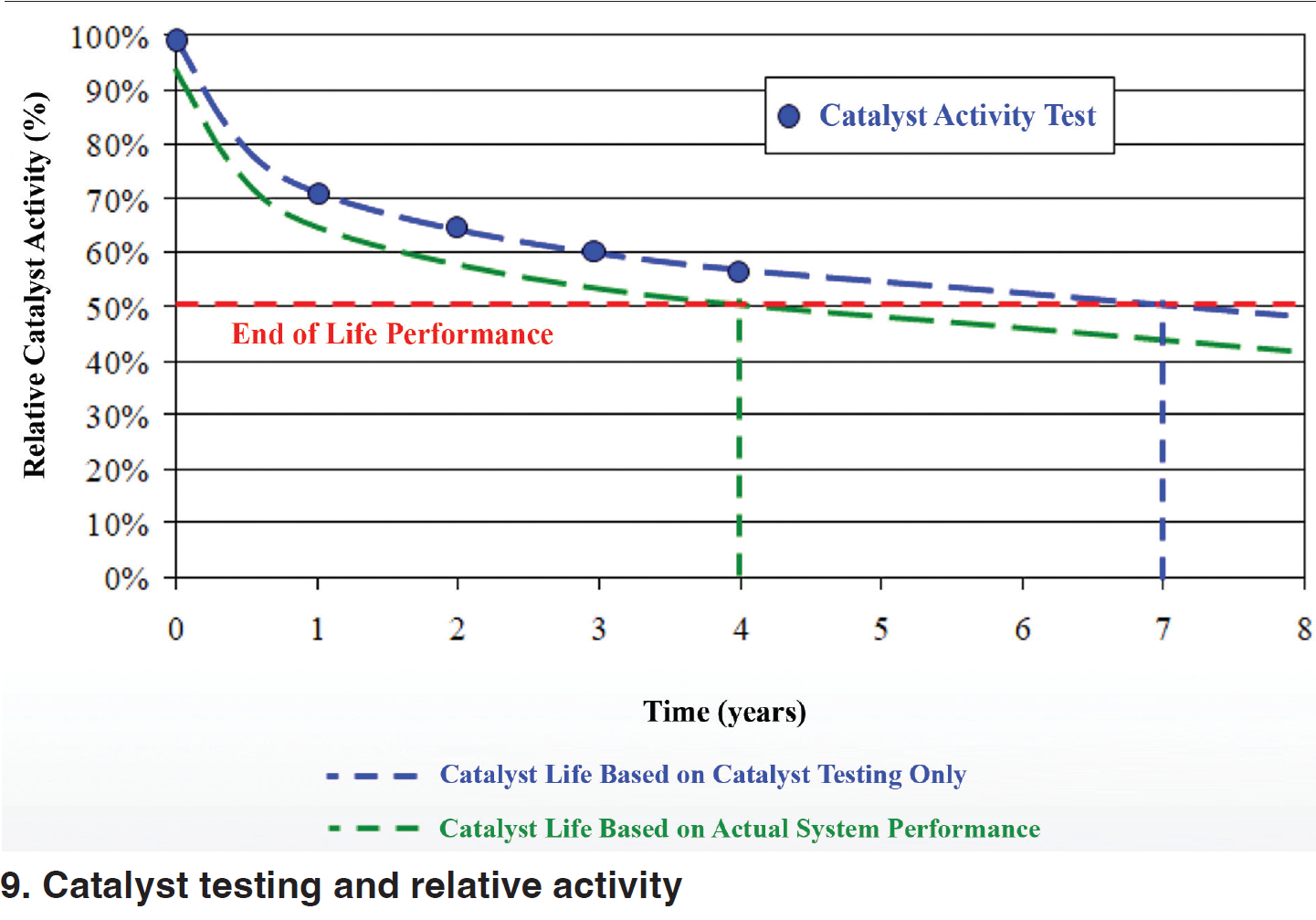
Exciters/starters
“The primary role of the excitation system,” ABB’s Chad Mourad explained, is to “maintain the generator terminal voltage” and operate the synchronous machine within its operating limits. “The excitation system guarantees the quality of the generator voltage and reactive power, and therefore the quality of the delivered energy from the powerplant.”
Other key technical points:
- Provides variable DC current to the rotor field.
- Controls the terminal voltage.
- Ensures stable operation with network and/or other machines.
- Keeps machine within permissible operating range.
- Contributes to transient stability after a fault.
- Communicates with the powerplant control system.
He then covered the major components of a static starter and its connection to the following items: circuit breaker supplying the medium voltage, medium voltage input transformer, and output isolating switch.
He ended with ABB’s capabilities to supply, service and maintain all components.
ABB’s excitation systems Americas is located in Montreal, Canada.
Generators
Jamie Clark, AGT Services, presented Generator outage planning – and contingencies.
He began with some interesting statistics:
- More than 5000 generators (3000 GE) have been built since 1995, peaking around 2002 (Fig 10).
- Average generator age is 25 years.
- Stator design life is 25-30 years.
- Field design life is 10-15 years.
- All design life numbers assume base load (limited start/stops).
- Generator maintenance is normally an afterthought.
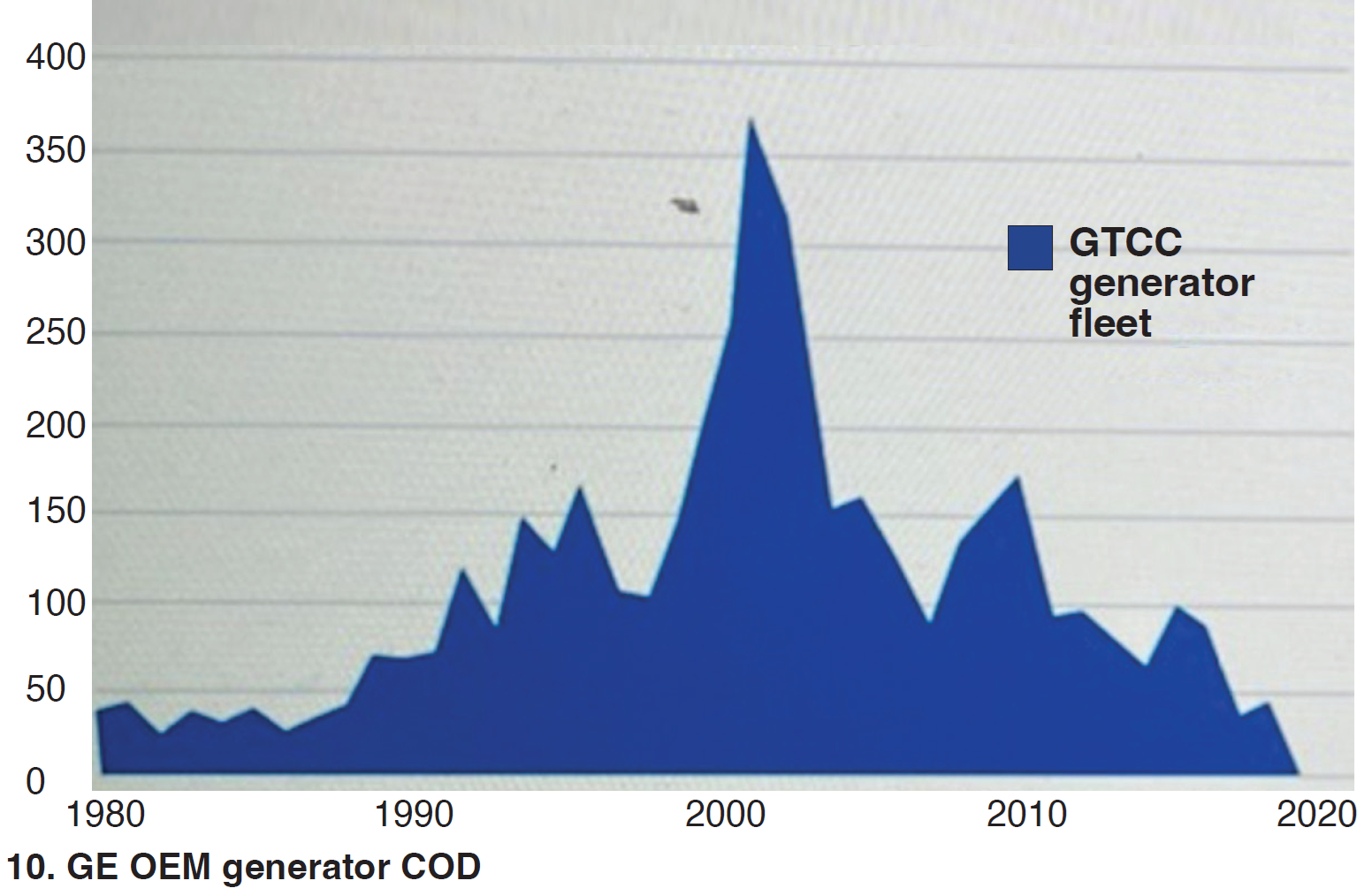
At last year’s conference, Clark made an interesting point that “around 75 percent of combined cycle starts run less than 24 hours.”
At the current time, there are limited resources to test, inspect and repair generators, and there are limited resources to make new windings.
So how do owner/operators predict testing and inspection? More importantly, what are they prepared to do with the inspection findings, and what are their contingency plans?
He covered standard field testing: visual, electrical and mechanical. He then moved on to “improved robotic inspection capability,” with cautions:
- Not all generators are the same.
- They have different “entrance gaps” (limitations) for the robotic equipment.
His advice: “Make sure contractors offering robotics provide proof of successful fitment, including EL CID and Wedge Map capability for your particular generator model.”
He added: “A borescope-aided visual inspection is also very useful” for (as examples) field end winding condition, main lead condition, stator winding inspection and searches for greasing.
He ended with braze joint inspections and radiography.
His final advice: “Evaluate your fleet mix and determine spares, and long-lead-time component strategies.”
Bypass valves
Merijn Reus, Advanced Valve Solutions, discussed HP bypass valves in cycling power plants. These valves, he explained, are “critical components undergoing significant changes (challenges) due to the influence of renewable energy.”
As explained at HRSG Forum 2024, HP bypass valves in base-load operations traditionally served specific functions:
- Open to 80 to 100 percent during steam turbine trip.
- Bypass HP steam during HRSG startup and shut down, performed a few times per year.
But today these valves face more frequent operation, impacting reliability and system integrity.
This transition is particularly harmful to dump-tube-type valves, due to water impingement (Fig 11) and high-frequency vibration.
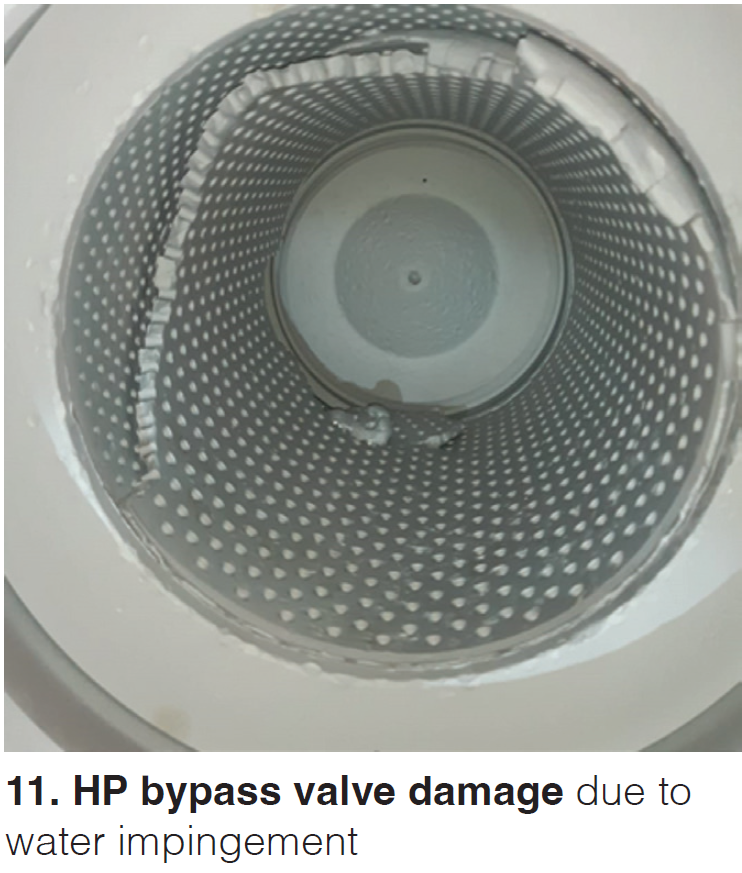
Fundamental impacts of cycling in the industry are:
- Failure of dump tube integrated in the valve body.
- Cracking of nozzle at steam line weld (continuous thermal stress regardless of steam flow).
- Thermal stress in downstream piping leading to cracking and deformation (primarily at high steam flows).
He went on to suggest how to prevent dump tube failures (Fig 12):
- Eliminate dump tube, replacing it with heavy-duty perforated plates.
- Introduce a second dynamic pressure stage to prevent overcritical expansion and minimize turbulence (oscillation).
- Support the perforated cage of the second dynamic pressure stage at the bottom.
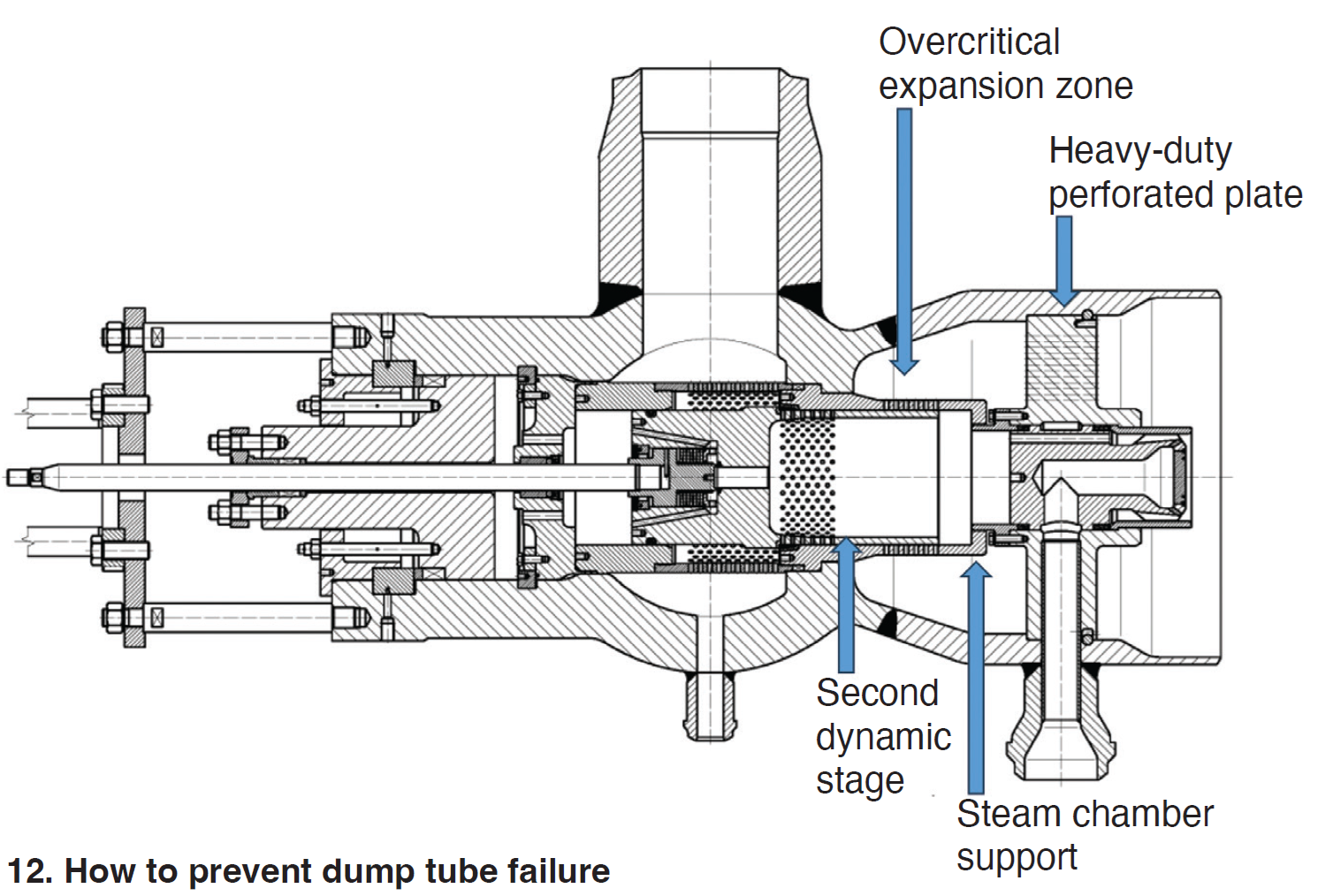
He then suggested how to reduce thermal stress in downstream line and nozzle weld:
- Replace perpendicular spring-loaded nozzles with axial spray injection through steam atomizer.
- Insulate spray water supply line by use of an inner liner.
Warming systems
Pierre Ansmann, Arnold Group, presented Arnold complete cycle solution, more specifically the benefits of a turbine warming system, with selected examples. The case studies reviewed optimized cycle time, reduced HP low-cycle fatigue, and improved CT firing time to reduce emissions.
For more, see the review of HRSG Forum 2024 in Combined Cycle Journal.
He then focused on a D11 case history.
A unique feature shown at AOG 2024 was Arnold’s Step Protection system that provides solid ground above the insulation and protects the insulation during inspection and maintenance (Fig 13).
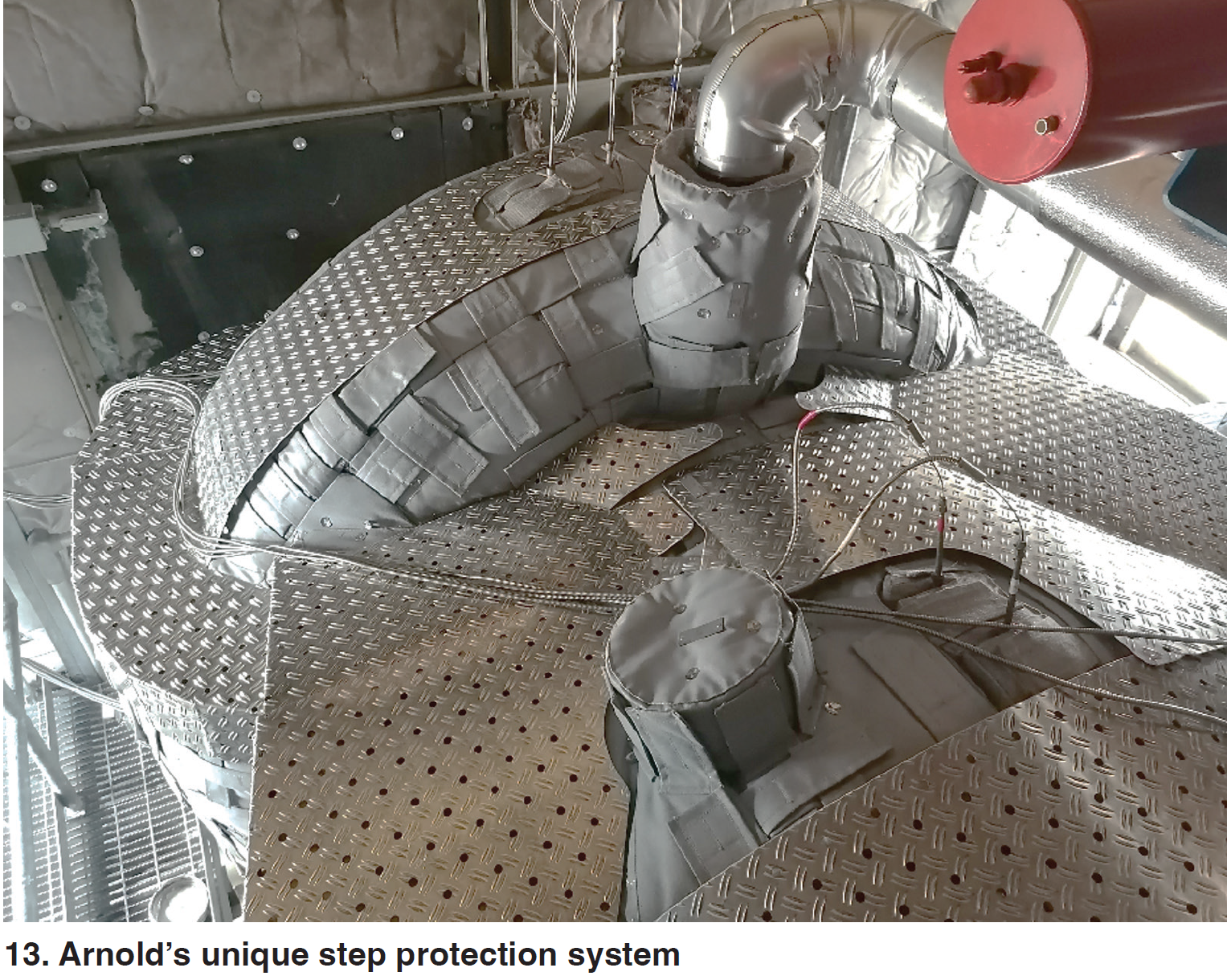
Key steam turbine warming takeaways included:
- Reduced startup time by up to 75 percent.
- Reduced parasitic load.
- Less stress on CT hot-gas-path/exhaust area.
He then mentioned HRSG warming options and a downcomer project involving both Duke Energy and EPRI.
GT health
Dan Stankiewicz, Liburdi Turbine Services, discussed Gas turbine health management and advanced analysis techniques to both optimize service intervals and detect abnormal conditions.
He introduced the Liburdi gas turbine analysis program (GTAP), a physics-based engine model for full-gas-path aero/thermal analysis and calculations of both power and efficiency loss.
His examples were quite specific covering hot section measurement, compressor map, and stage-by-stage operating conditions.
This leads to FE analysis to calculate metal temperatures and modeling of critical components (e.g. turbine flows at each critical row, among others). Creep strains and deformations during operation can also be calculated.
He went on to discuss oxidation and coating life as a result of stress and temperature.
Finally, a “life model” calculates equivalent operating hours that could perhaps be used to extend an outage interval.
Performance analysis
AIM Power Consulting, presented by Craig Nicholson, dove deep into Gas turbine performance: behind the data. Nicholson presented an interesting overview of performance factors and what can and cannot be easily controlled for mechanical characteristics, inlet and exhaust conditions, fuel, and firing temperature.
He then focused on gas turbine performance data, measurement, analysis and monitoring.
Most examples were based on thermodynamic evaluation. The thermodynamic modeling he presented is EPro+. The goal is optimal performance with reduced scope, time and cost.
He then offered highlights from four projects:
- Evaluate inlet temperatures, then energy-balance HP and LP turbines to improve performance.
- A controls upgrade to correct years of firing temperature drift leading to a 4 MW increase at full load.
- Energy balance firing temperature adjustments following installation of non-OEM parts, increasing output.
Nicholson stated that “we have observed numerous occasions where units have been conservatively adjusted, or not adjusted at all.”
He added: “Data validation is the key. We are accurate, impartial, dependable, and available.”
When asked “Do you always have to go to the site?” His answer: “No.”
Parts supply Korea
Ta-Kwan Woo traveled from South Korea to present Sung-Il Turbine’s capabilities for Casting of gas turbine parts. He focused on turbine blades, made in-house through reverse engineering.
Based in Busan, South Korea, Sung-Il also produces hot-gas-path parts for Alstom machines, and offers a variety of field services for customers globally.
He gave detailed examples of:
- Vacuum precision casting.
- Thermal barrier coatings.
- Machining/heat treating.
- Testing.
- Inspection and evaluation.
He then outlined the full capabilities of Sung-Il.
Parts innovations
Jeremy Clifton, Allied Power Group (APG), discussed an Expanded suite of Alstom capabilities.
Capabilities specific to Alstom machines include:
- Component repair.
- Coatings.
- Rotor repair.
- Casing repair.
- Custom engineering.
- Field services.
- Steam turbine services.
- Parts supply.
Engines served:
- GT8.
- GT11, D-NM.
- GT13 (coming soon).
He then presented various examples including the inspection process, custom-engineered coating robotics, and various field services.
His concluding statement: “There is innovation and growth in the non-OEM world.”
Open discussions
Open discussions (end-user questions) were held throughout the conference, as time allowed, on:
- Inlet and filtration.
- Compressor
- Combustor
- Rotor and casing.
- Hot gas section.
- Borescope/robotics inspections.
- Exhaust systems.
- Generator and electrical, including testing frequency.
- Controls, BOP and auxiliaries.
- Valves and leakage issues.
- Safety, compliance, outages.
- Parts/services lead times.
- Use of OEM service bulletins.
- Questions for GE.
Day 3 training
No AOG conference would be complete without training sessions specific to Alstom turbine and generator users. Day 3 was dedicated to participant-selected modules on these options:
- Liburdi Turbine – GT coatings short course.
- AP4 Group/HTS – Canary data historian training course.
- NEC/National Electric Coil – Alstom generator life extension training course.
Steering Committee
The steering committee for the 2024 event was:
- Kristi Gledhill, Midland Cogeneration Venture (End user).
- Paul Drake, Tenaska Berkshire Power (End user).
- Ross Goessl, We Energies (End user).
- Chris Hutson, K-Machine (Service provider).
- Jeff Chapin, Liburdi Turbine Services (Service provider).
- Ashley Potts, AOG point of contact (AOGusers.com).
Sponsors
Arnold Group, Hughes Technical Services (HTS) and Liburdi Turbine Services have supported the group since its beginning. Other sponsors for 2024 were ABB, Advanced Valve Solutions, AGT Services, AIM Power Consulting, APG, Groome Industrial, and Sung-Il Turbine. CCJ

